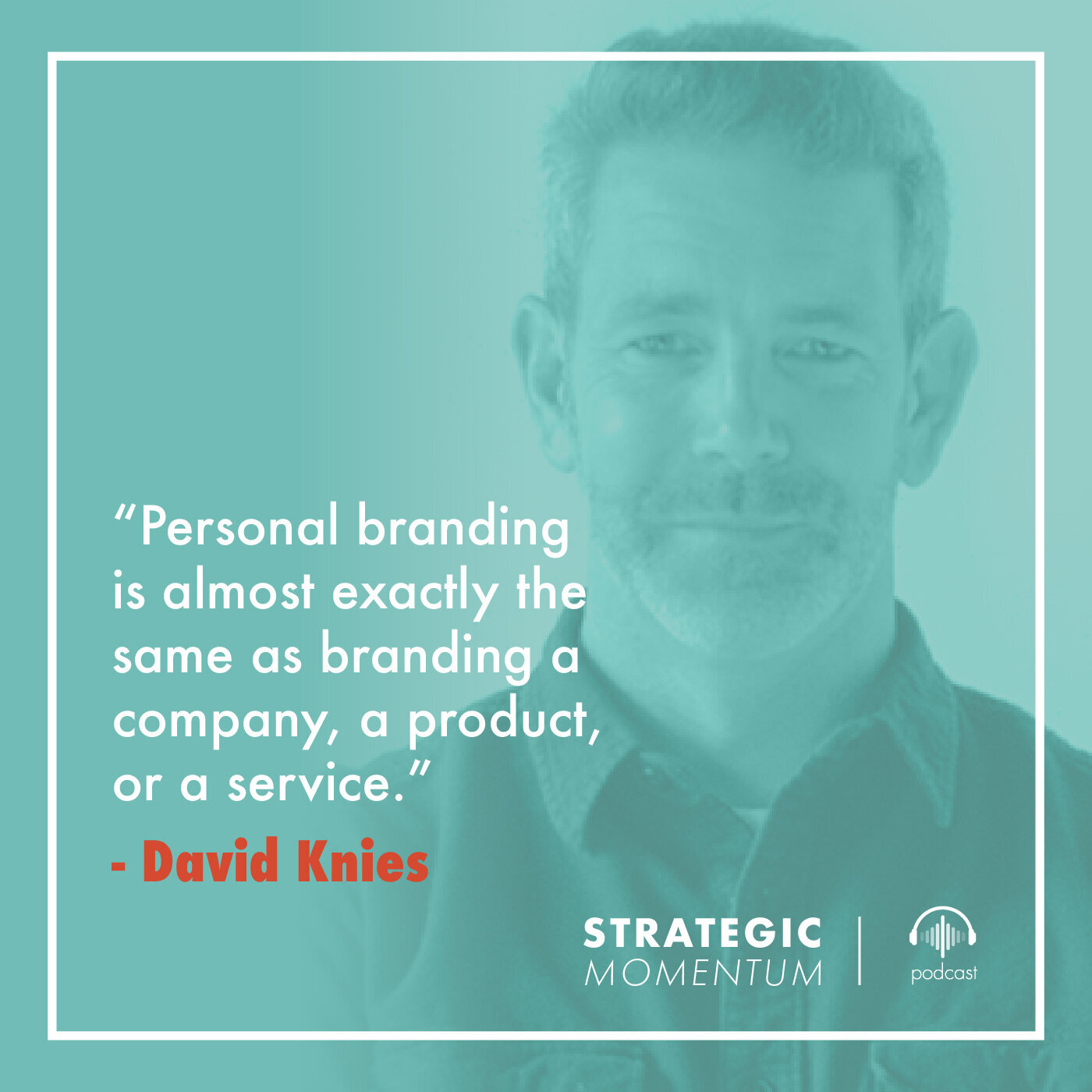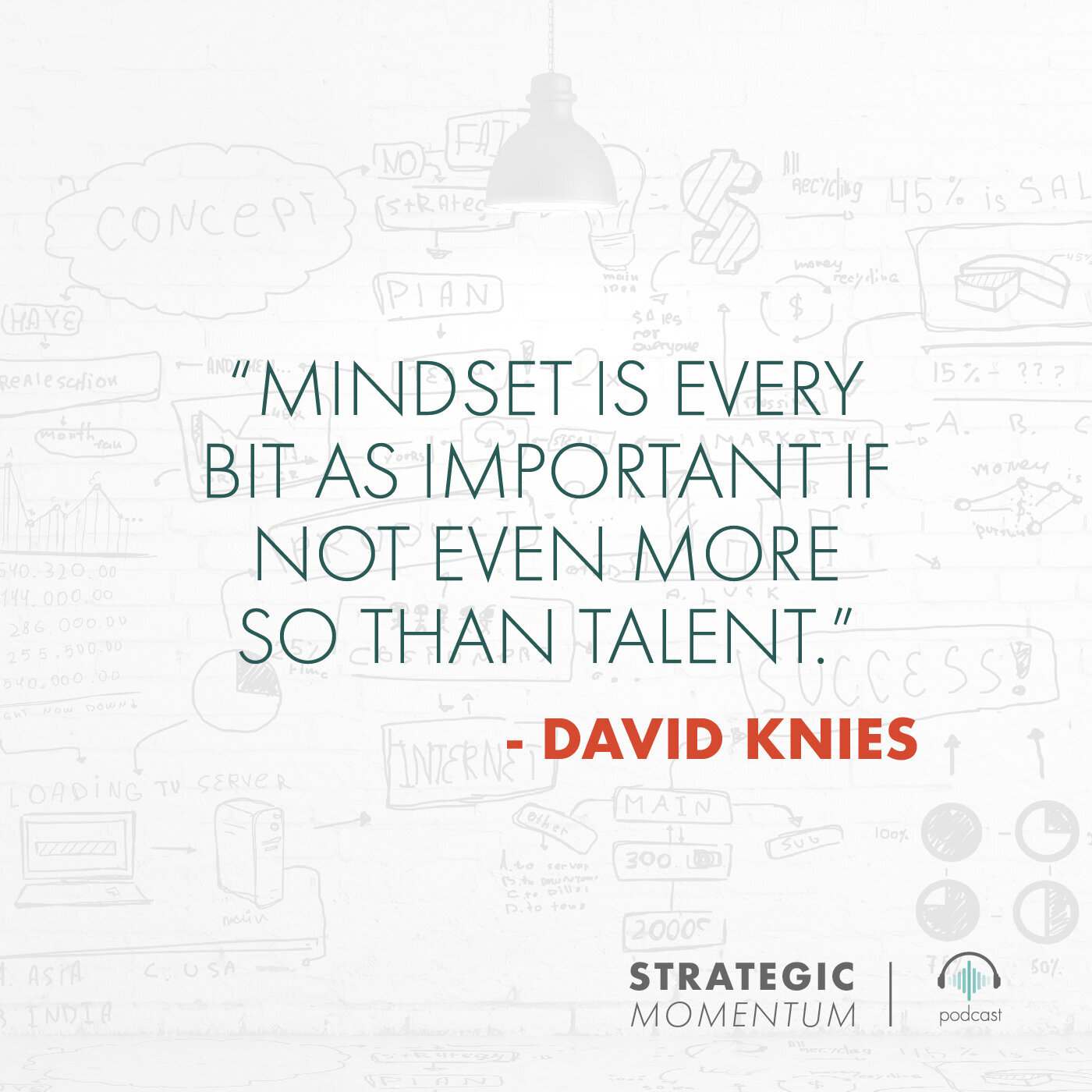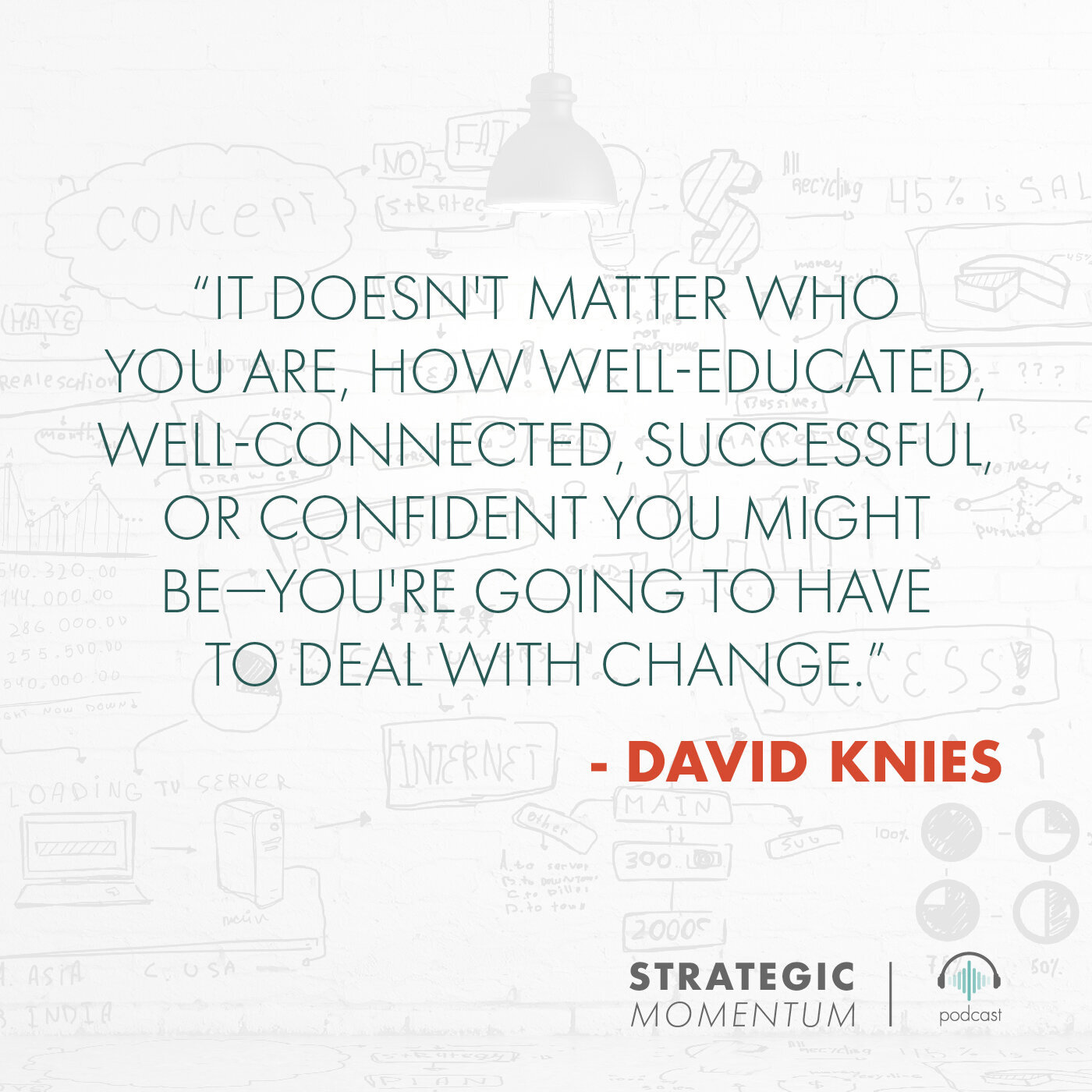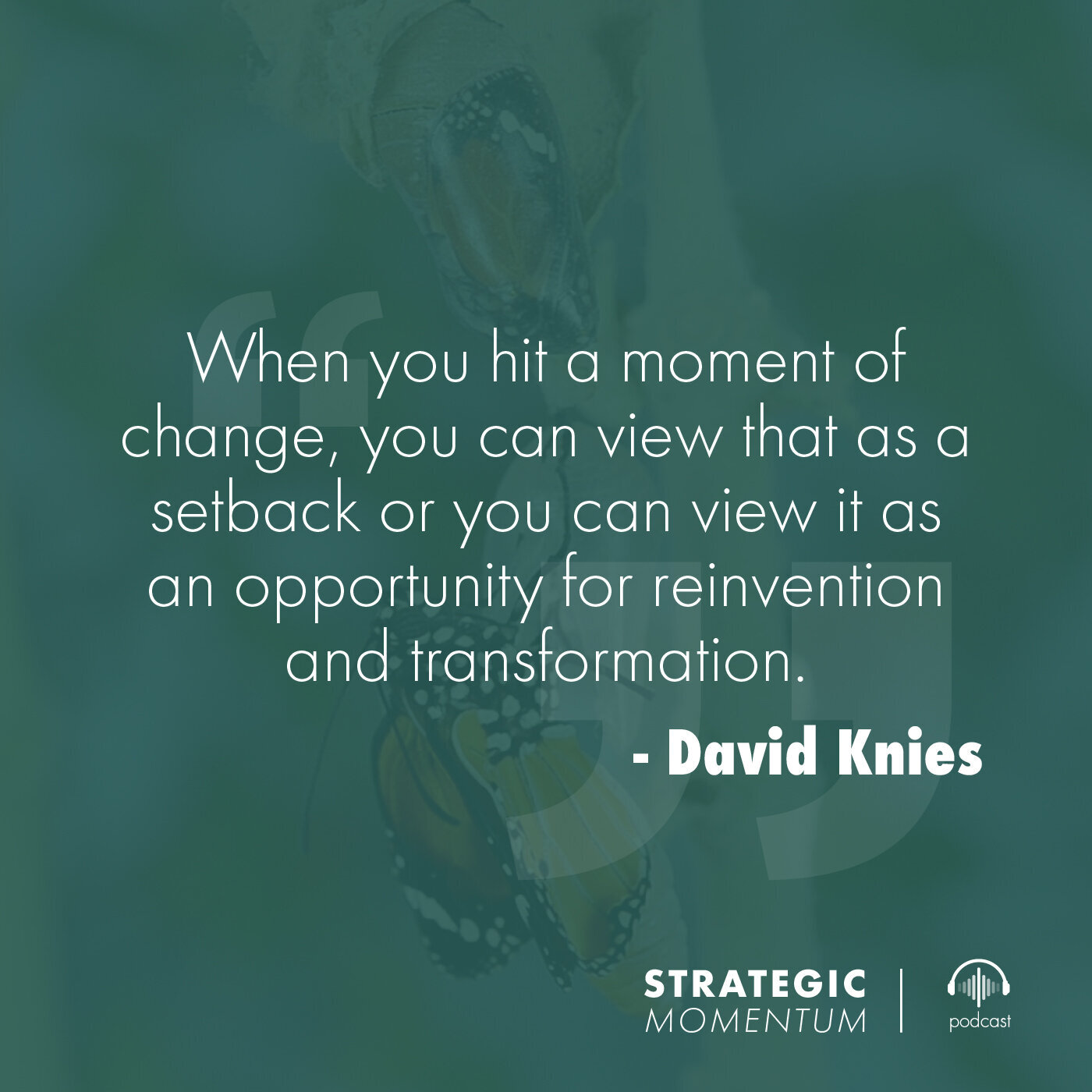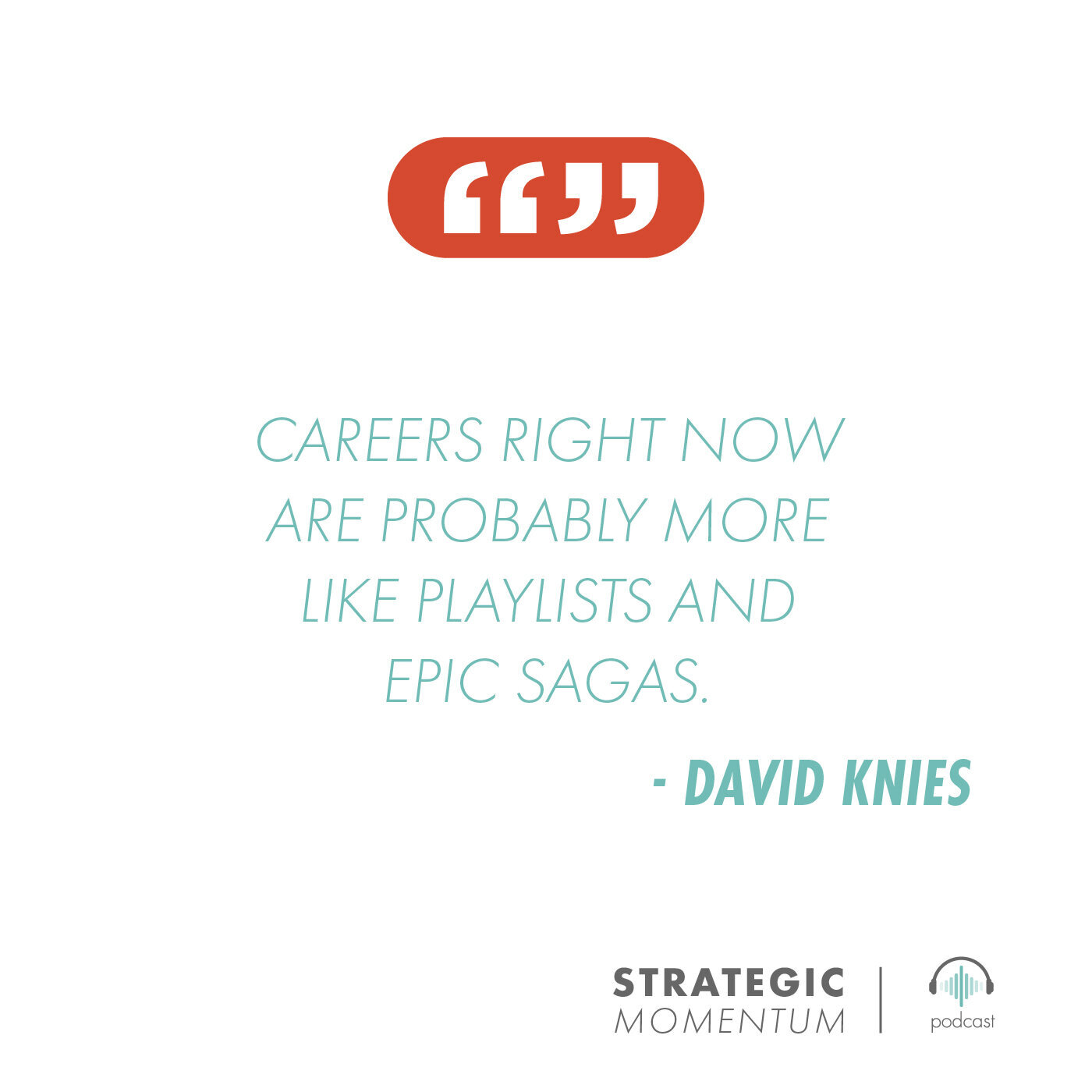Ep. 77 - Building Your Personal Brand: Identifying Your Superpowers, Defining Your Value, and Managing Your Career Like a Business — with David Knies
Find Us Wherever You Listen To Podcasts
In our last podcourse, Jenny Blake walked us through what a career pivot really is, answering questions about how to move forward and be more fluid in a non-linear career path. Today, we continue to explore this question with David Knies, the Chief Growth officer at Boston-based design firm Essential.
While brand development is commonplace in business, many people struggle to define their personal brand in a way that represents their authentic selves and effectively differentiates them in the market. For David, a brand strategist and growth leader for high growth, design- and innovation-led businesses, the trick is to think of yourself as a business.
His mission is to create opportunities that help businesses and leaders reach their next level faster. In this episode, David gives us insight and advice into:
The lessons learned throughout his own career journey and the need to create his own brand strategy
What it takes to define who you really are, what you do, and the unique value you truly bring.
Developing Career Agility and an Ethos of Perseverance
The ups and downs in David’s own career are ultimately what fueled his passion for helping people deal with their own. When David graduated college, he didn’t have a job.
“I had always wanted to play professional soccer in Europe or be James Bond, and I didn't have the skills to do either. So, when I graduated, the offers weren't exactly flying my way. A lot of things were there as opportunities, but nothing that got me excited.”
So he decided to do what he calls his “breakaway move,” which was to come up with a big goal and make it happen. It was his dream to work in the sports industry, specifically at Adidas. Through perseverance, he was able to make it happen, but that journey to secure the opportunity had unexpected twists and turns — like receiving a letter that his offer had been cancelled just as he was about to leave for a flight to Germany and start his new career.
David was eventually able to land that same role again and the experience launched his career in marketing and brand strategy, but it also provided an early lesson on the value of embracing change and practicing resilience.
David has since spent the last 30 years working deep inside the global innovation economy at the intersection of design, management consulting, venture capital, innovation, strategy, brand, product, marketing, and even executive recruiting. He spent about 20 years on the client side, with both big global brands and some early-stage startups across consumer and tech, then spent the last 10 years on the consulting and services side. He found that he is drawn to opportunities where he can be an agent of change or be part of a team of people ready to change the norm.
Yet, after being in marketing leadership roles for a good portion of his career, David went through his own pivot as he realized those marketing-focused positions didn’t play to his full strengths. He had to come up with his own brand strategy, figure out how he was unique, and discover how he could create value for an employer or a client. Then he had to learn how to pitch it — because it's one thing to say it but it's another thing to actually get people to pay for it.
Identifying Your Superpowers (and your Kryptonite)
“Personal brand strategy is really understanding how to view yourself as a product and what you offer as a service and how to best position that in the market to leverage your own unique strengths or superpowers, or understand your own weaknesses and your own kryptonite.”
You have to think of your career as a business and develop your personal brand strategy. The heart of any brand strategy is market research, and according to David, personal brand strategy is no different. You have to understand your market before you work on your positioning.
Defining your positioning entails identifying what your superpowers are, which requires some investigating and analysis. It starts with collecting feedback from the people around you and what they see your unique strengths to be. You may even consider assessments like Myers-Briggs or StrengthsFinder. Then it’s about performing a SWOT analysis on yourself to also identify your weaknesses and threats. When you do identify weaknesses — or as David says, your Kryptonite — you need to create a plan for addressing them; outsource, delegate, improve, or otherwise minimize how much time you put into those activities so you can focus on the positives. This is all part of your personal brand.
Building Your Brand Strategy and Defining Your Value
Creating a business strategy starts with setting a goal and working backwards to lay out how you will meet it. Outlining your product features is only step one of building your strategic career plan. Think of the 4 P’s of marketing — product, price, placement, and promotion. You must also have a plan for the other three.
In determining your placement, it’s important to not focus on a title but rather the role you want to play and the industry you want to work in. A title can be a misleading indicator of value. “Founder & CEO” may sound nice, but as a startup, you’re likely to be making half of the salary as an enterprise VP. Instead, focus on your vision.
Your price, or your value, is based on the skills and expertise you bring to the table. Really consider how much your time and experience is worth, but be cautious of overpricing yourself (especially when it’s being driven by your ego) and under-delivering.
Finally, when it comes to self-promotion, don’t dwell on the past: your career achievements from 20 years ago are great on a resume but don’t speak to what you can or will do in the future. Again, it’s about clearly defining your vision and positioning yourself for acceleration in the next few years — it’s thinking about your next play.
Iteration, Resilience and Fluidity
As we learned from Jenny Blake, change is a constant in every career path; and as we learned from Rick Lindquist, so is failure. But the best thing to do is to develop yourself and your skills in a way that prepares you for these sudden and unexpected changes.
No one teaches you how to manage your career — it has to be learned. So you have to continuously learn and iterate along your career path, which might mean practicing one skill relentlessly, or constantly learning new skills and getting back up every time you fall down.
But as long as what you are doing aligns with your overall strategic plan and your vision, then you should see traction as everything starts to fall into place. You’ll be able to create that strategic momentum you have been looking for.
David’s Career Advice.
“Don’t be an asshole.”
Being able to work on a team is critical to success, so do what you can to build relationships and work in a way that is integrated and connected. Try to avoid negative politics.
Key Takeaways:
Personal branding is no different from business branding. It requires research, analysis, goal setting, and a strategic plan. You are a product, and you have to manage your career like a business.
When looking at your own brand, thinking about simplicity and singularity is key.
While many of us seek to be jacks-of-all-trades and broad generalists, there is undeniable value in identifying those few skills that you are exceptional at and investing in them. Those are your superpowers.
When marketing a business, you have to think of the 4 Ps —product, price, place, and promotion. The product is you, place is your target marketplace, price is your value, and promotion is how you sell yourself.
The same way marketers think about pricing strategy, you have to be strategic in defining your value.
Don’t undervalue yourself — know what skills you have that companies are willing to pay a premium for. But don’t overprice and underdeliver. This is where testing-and-learning along with doing your research can help you pinpoint your pricing sweet spot.
When looking for opportunities, come up with a big goal that you can communicate clearly “because people bend over backwards to help you if you ask them for help.”
But be specific in your ask and know what you’re looking for. Don’t just say “I’m searching for a job, can you help me?”
If you can come up with that inspiring idea and vision behind what you want to do, people will get even more excited to get involved and be part of your success
Look where you're going, not where you came from. It’s that next play philosophy.
Your vision should always be forward-thinking. Don’t use your achievements from 20-30 years ago to be what you use to set yourself apart.
Defining your brand is being able to say who you are, what you're all about, and why you do what you do very concisely and convincingly, just like any brand has to do.
Be clear on what your story is, what the value is for others. They want to understand what you're truly great at.
Realize that our cultural emphasis on authenticity, humanity, and purpose behind brands at large also applies to your personal brand.
When looking for your next role, ask:
What type of culture or environment are you most comfortable in?
What are the verticals or the industries you want to go work in?
Where are you going to have the most value?
Between where you want to go and where you are now, is the value apparent? Does your experience translate?
Are people going to see your value and is there a big gap there? Is it something where you're going to have to build a bridge to get over it?
Personal branding is about understanding your own product-market fit. Your talents and skills need to align with the roles you are pursuing, not just for your own sake but the sake of those on your team.
It’s about letting go of that ego to serve your higher purpose and find your north star.
Understanding how to develop the resilience, mindset, and the flexibility to deal with change is key. When you hit a moment of change, you can view that as a setback or you can view it as an opportunity for reinvention and transformation.








